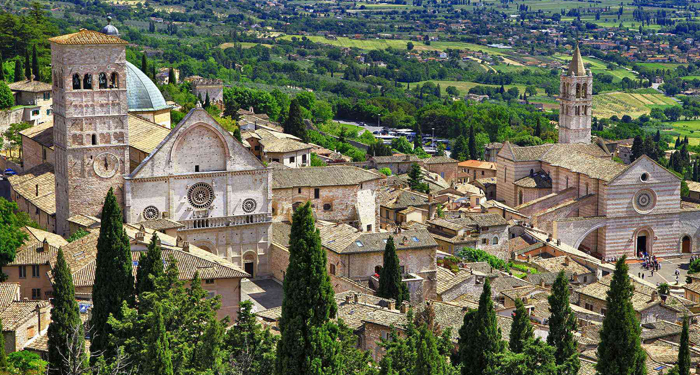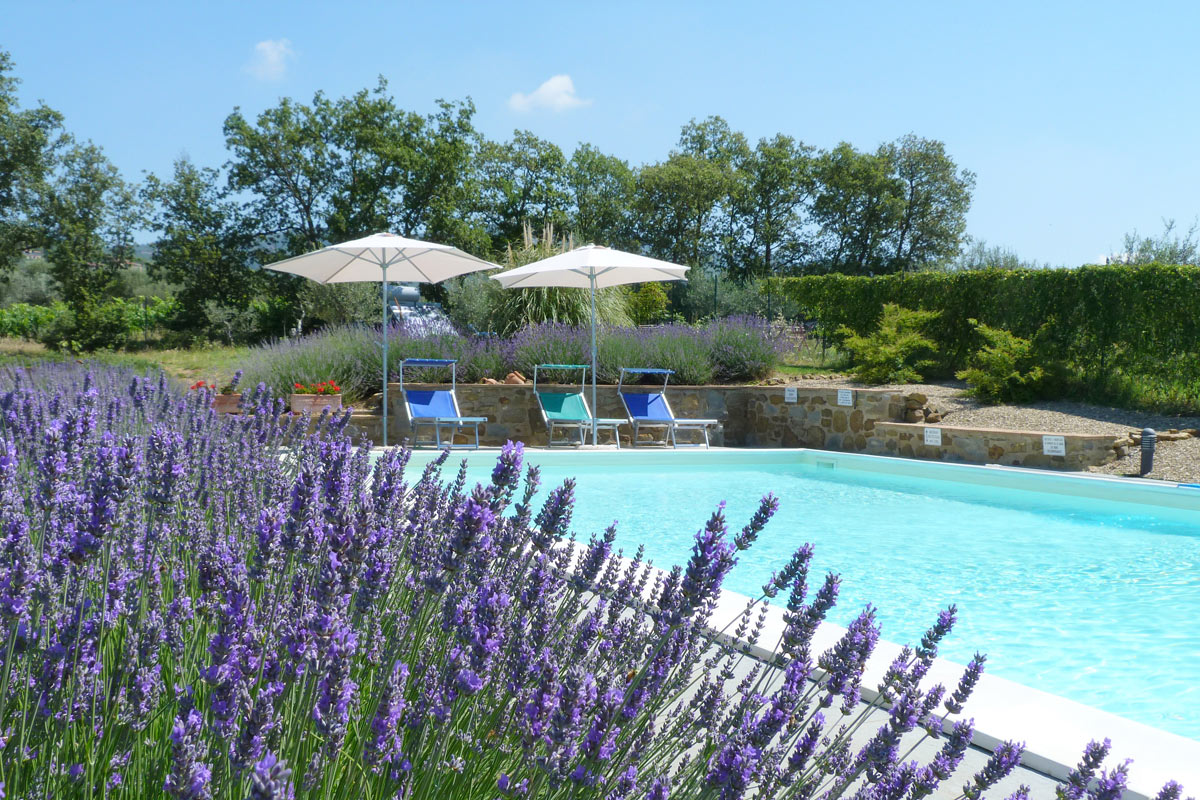Assisi
Assisi is the city of St Francis, San Francesco, the gentle saint who spoke to animals. Today it is famous for the Basilica di San Francesco, the principal monument to the memory of St Francis which, contains a magnificent series of frescoes. There is also the Basilica di Santa Chiara where St Francis was interred before his body was transferred to a tomb in "his" Basilica in May 1230. Assisi is set on the northern end of Monte Subasio, a mountain which is the source of the pink stone that makes the towns in this area so delightful.

You should also visit Spello, located at the southerly end of Monte Subasio, perhaps one of Umbria's prettiest villages where all the original paved streets have been restored and almost every house has a show of flowers. There is also a recently discovered and restored Roman Villa where significant mosaics are on view to the public.
Perugia
When you drive to Assisi you pass through several tunnels under Perugia. Originally Etruscan, Perugia is now a large Roman city with huge palazzi and a grand Duomo with the Galleria Nazionale dell'Umbria nearby There is an interesting cistern, the Etruscan well, resting near Piazza IV Novembre where you will also see the Fontana Maggiore with its meticulous decorations.
Rocca Paolina, a main tourist attraction, a maze of underground passageways, massive chambers and vaulted ceilings is what remains of the papal fortress right in the historical heart of Perugia, which was built following the papal defeat over Perugia's independent minded elite. It was torn down and built over after 1890 when Italy was unified, removing the symbol of papal oppression.

Perugia is also home to the University for foreigners which attracts students from around the world. There is a very useful MiniMetro transport system to and from the historic centre. You can park at Pian di Massiano Terminal and arrive at the centre in 20 minutes. It is recommended, as traffic in Perugia is very.... "Italian".
Read this article for more information on getting to Perugia
Gubbio
Gubbio is north of Perugia and sits on the slopes of Monte Ingino and claims to be one of the most beautiful and best preserved medieval towns in Italy. The town is closed to traffic so there are plenty of car parks. There are signs for a lift to get you up to the Piazza Grande, which lives up to its name.The Palazzo dei Consoli is included in the "impressive buildings" list of Italy. The Duomo is a little further up in another lift. To the west of the piazza Grande is the town's main street, Via dei Consoli, which gets you back down to the parking level and interesting buildings along the river. Gubbio is also known for the truffles found in the area, with many outlets to buy some.

Bevagna and Montefalco
Bevagna is a treasure. It is flat and therefore easy to walk around and see everything. When approaching from Foligno pass by the first Porto and continue along the old town wall where you will find a car park on the right. There are steps leading up to Porto Todi crossing a stone bridge. Whilst on the bridge make sure to look down over the left side and you will see the old washing area served by the river. The main street, Corso Matteotti has many little streets branching off left and right and at the far end, set back on the left, is the Roman Theatre. The entrance is very rustic and the ticket office is the shop on the left. The interior is fascinating.

Montefalco is visible from Bevagna, on a hill surrounded by olive trees and vines. It is famous for the Sagrantino grape and its strong red wine.. Also the Rosso di Montefalco. The church has many famous frescoes including a circular fresco of the Nativity by Perugino. The Piazza del Comune is unusual as it is circular.

Orvieto
Whichever direction you come from, you cannot miss Orvieto as it sits high up on a plateau of Tufa rock. It has a station on the Rome-Florence line and is also on the Autostrada del Sole(A1). You can park near the station and take the funicular up to the area of St Patrick's well, Pozzo di San Patrizio. It is to the right of the funicular station. The well is 63m deep with two sets of 248 steps making a double helix. The steps were used by the donkeys to bring water up and they never passed each other.
You can take the bus up to the Duomo which leaves from outside the Funicular or walk through the pretty streets flanked with little shops. The Duomo has a very striking facade which commands many photos. Inside, at the end on the right is the Cappella della Madonna di San Brizio. The walls are covered in frescoes by Signorelli. They are very different from the usual religious type and have to be seen to be believed.
There are guided tours of the underground city of Orvieto, dug by its inhabitants into the soft tufa stone creating, a network of tunnels, caves, wells and cisterns which were used as storage,etc. You can read more of the History of Orvieto.

Where to stay in Umbria
Here are all of our Villas in Umbria, beautiful bases for exploring this magical part of Italy.
Castelonchio is a villa for 6 with a private pool, on the shores of Lake Trasimeno:

